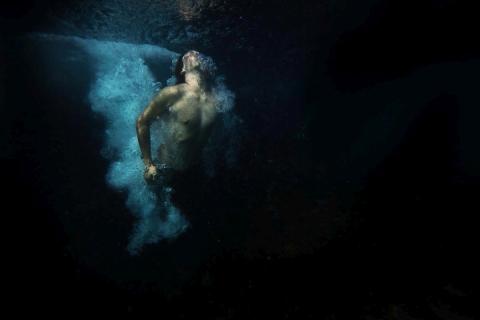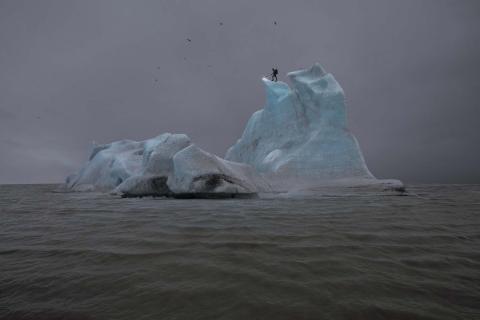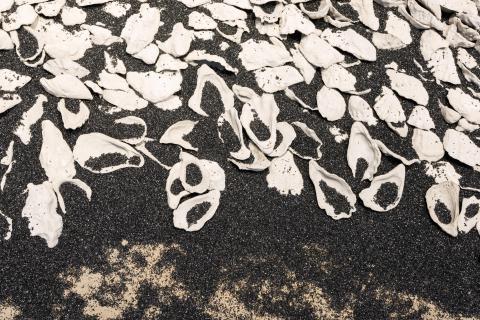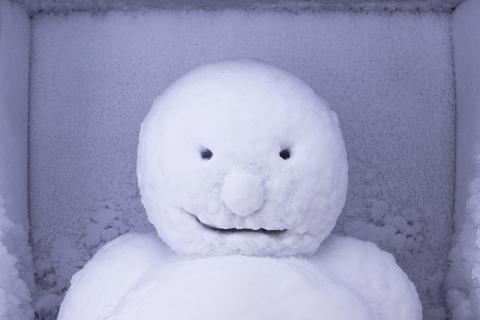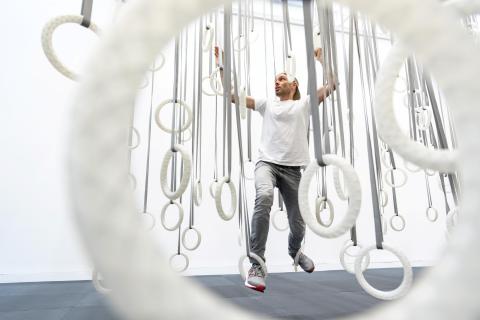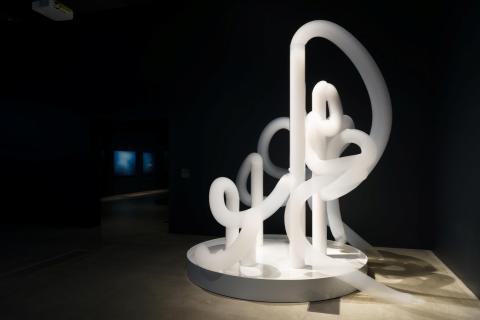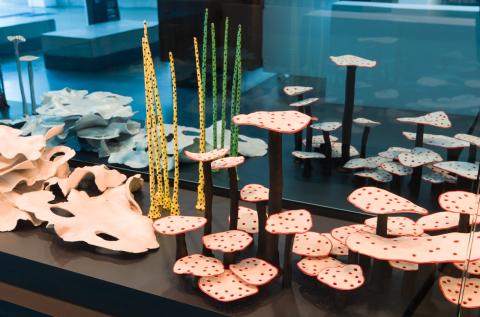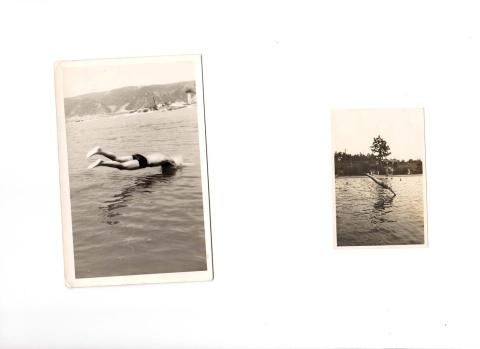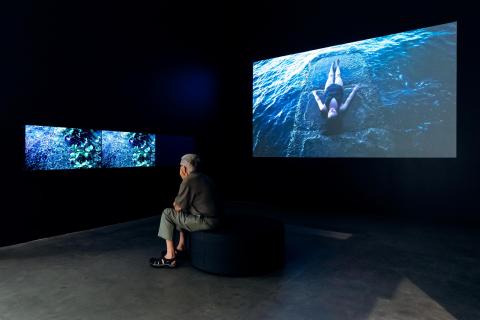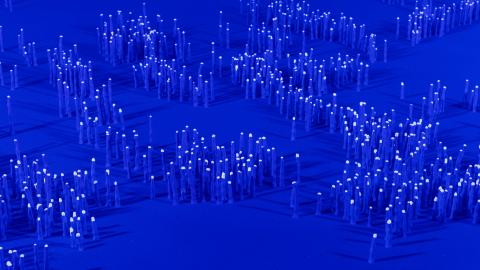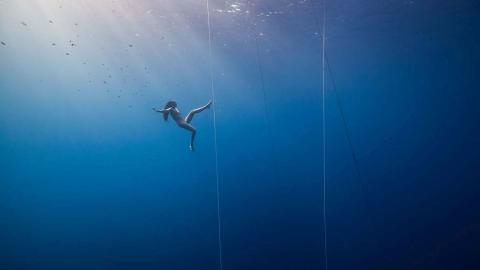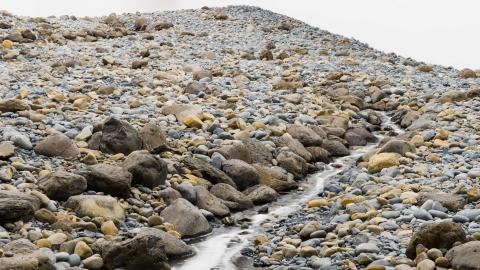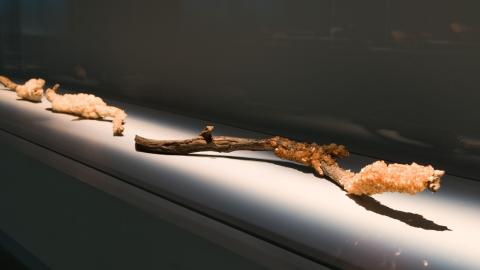A rising tide
‘Water’
The freedom and energy we feel as we swim is evoked by Paul Blackmore’s photographs: the moment of diving under a wave and moving towards the ocean’s surface, stretching upwards to breathe again.
Life emerged in water, and later moved from the sea to land and air. Like learning a new dance or crossing an obstacle course, change challenges us, as well as offering opportunities. William Forsythe’s The Fact of Matter 2009 is presented with an invitation: ‘Please traverse the space using only the rings’. As the world warms, sea-level rise has accelerated to five millimetres a year. Collectively, we must consider the risks of action and inaction. As a dancer and choreographer, Forsythe encourages us to find new ways to lift our bodies, learn from each other, move and work together.
Water is rarely still. In a calm pond, we spy traces of movement beneath the surface, or the passing reflection of a bird. Water moves through the landscape, a carrier of life and change. David Medalla’s foam sculpture Cloud Canyons No.25 1963/2015 shapes water into rising arches of slow-moving bubbles. Each bubble is a globule of one substance held within another — gas within liquid. Microbial life is thought to have developed within such bubbles on the first intertidal shores.
As oceans warm and sea levels rise, low-lying Pacific nations struggle against the tide. Now based in Sydney, Angela Tiatia grew up on Savai’i in Samoa. In Holding On 2015 she uses her body as a measure of the threat; as time passes the light slowly shifts. Her three-screen film Tuvalu 2016 shares a perspective on what it is like to live with the rising waters.
Presented as a long tideline, Patrick Pound’s artworks On Reflection, Swimmers, Divers (left) and Divers (right) 2019 unfold in multilayered rhythms. These patterns of repetition and variation generate energy and, perhaps unexpectedly, humour. Pound collected the images over a period of decades, purchasing them online or at markets. These long lines float with apparent calm; beneath the surface, however, turn the tangled currents of our image-saturated world.
In dramatic mural-scale images bookending the exhibition, Julian Charrière takes a blowtorch to an iceberg, reminding us of the unintended impact of the Industrial Age. As the ice of the world melts and warming waters expand, landscapes everywhere are changing. Like an endangered species out of place in subtropical Brisbane, Peter Fischli and David Weiss’s Snowman 1987/2017–19 relies on electricity — and human ingenuity — to power his life-supporting freezer. While he has very little room to move, we ourselves have more. For the moment.
